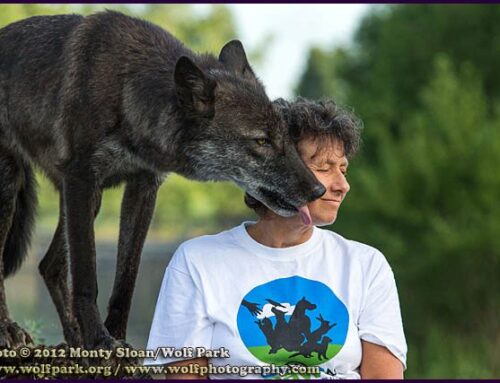You would think that after cohabitating for 15,000 years, give or take a few thousand, that humans would be better at understanding their dogs. For as much as we claim to love them and marvel at their abilities, we sure don’t know what they are talking about much of the time.
At a conference I was attending a speaker on the uses of social media used this video clip of an interaction between two dogs to illustrate his point that even dogs can be deceptive.
[youtube http://www.youtube.com/watch?v=GK4oXMRIi94?rel=0]It was funny to watch but I began debating with myself, should I say something or just keep my mouth shut? I didn’t want to be rude, or worse seem humorless, but the idea that the dog was trying to ‘fool’ the other dog into thinking he was dead was too much of a stretch for me. Dogs often offer behaviors similar to this, though usually with less dramatic flair, as an appeasement gesture. It doesn’t have to mean that the dog was afraid, or concerned, but it’s a behavior pattern that is common in dogs. I probably would have kept my mouth shut except for two reasons, we were at a conference for pet bloggers and the speaker asked for comments or questions.
Despite the fact that I am comfortable presenting information in front of a large audience, the thought of standing up and making an unrehearsed statement had my heart pounding and my mouth dry. But I had a third reason compelling me to speak. Earlier in the day we had been shown another video of dogs. This time it was a marketing video for a chain of doggie day cares.
As much respect as I had for the founder, overcoming tragedy and adversity to start a thriving business, I was dumbfounded by the video. In it a dog is introduced to a day care facility by other dogs. Voice-overs for the dogs express how much fun the dogs have while they’re there. The problem was that the actual behaviors of the dogs did not indicate that they were having fun at all. Perhaps dogs do have a great time but in the video I was seeing dogs visibly uncomfortable being filmed, tails were down, ears were lowered, backing away from the camera. The audience chuckled and applauded. I got up and left. Why would professionals in the animal care industry use footage of uncomfortable animals to illustrate how happy they were? It would be like making a porn film with one of the actors yawning throughout.
This was not an isolated event. All manner of professionals in the dog training and care industry are defining dog behavior and have it wrong: dogs offering appeasement behaviors are labeled as feeling ‘guilty’; fearful, snarling dogs are called ‘dominant’; confused, untrained dogs are labeled ‘stubborn’. For many dogs being misunderstood is not the end of the world, heck sometimes I feel as though no one understands me, but for fearful dogs, being misunderstood can mean the difference between being life and death. There is a disconnect between dogs and humans, one that often seems greater than the connection between us.





